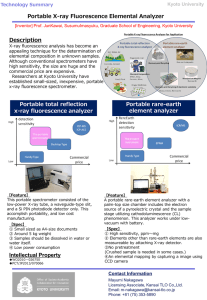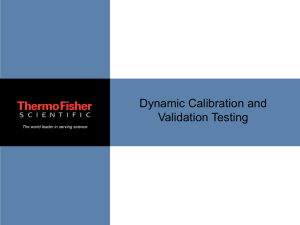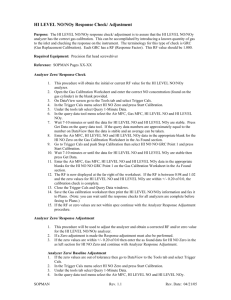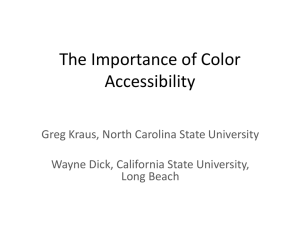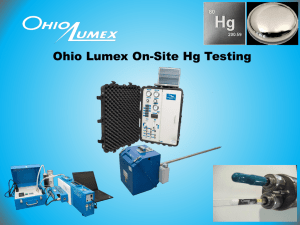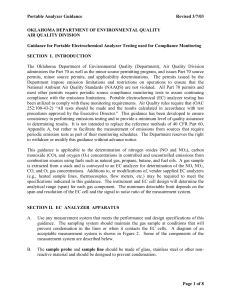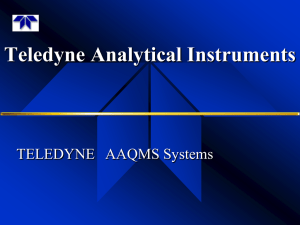QAQC
advertisement
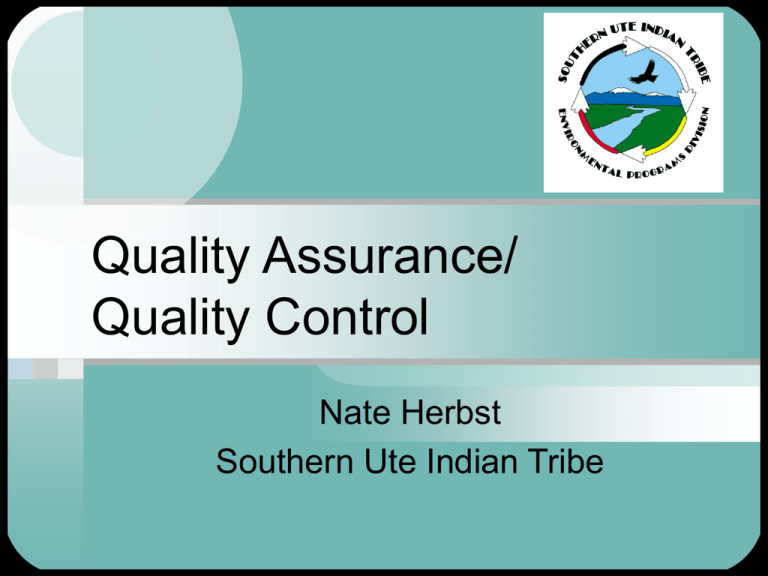
Quality Assurance/ Quality Control Nate Herbst Southern Ute Indian Tribe Intro to QA/QC • Getting good data requires many different steps – Data quality objectives (DQOs) developed • DQOs for ozone being developed • Measurement quality objectives (MQOs) for ozone exist – Analysis begun (after correct calibration) – QC checks performed – QA conducted 2 Data Quality Objectives (7 steps) • State problem – Define why monitoring is needed – Create team and purpose • Identify decision – What decision will be made with data? • Identify decision inputs – What data necessary to make decision? • Define boundaries – What are study area boundaries? 3 Data Quality Objectives (cont.) • Develop decision rule – What conditions will require action (action level)? • Specify decision error limits – What margin of error is allowable • Optimize monitoring design – Develop most cost-effective method of reaching DQOs • EPA hasn’t yet defined DQOs for ozone analysis 4 DQOs (cont.) Diagram of DQO steps (Diagram courtesy of U.S. Department of Energy – DQO homepage) 5 Measurement Quality Objectives (MQOs) Thanks to Melinda RoncaBatista (ITEP) • EPA has ozone analysis MQOs • Use these in element 7 of your QAPP • MQOs in a nutshell – – – – Shelter temperature kept between 20-30oC ± 2oC Analyzer must be reference or equivalent method Lower detectable limit 0.01ppm, noise 0.005ppm Data completeness 75% of hourly values between 9:01am and 9:00pm (for the ozone season) – Transfer standard certification ±4% or 4ppb (whichever is greater) 6 MQOs (cont.) – Transfer standard re-certification to primary std.dev 1.5% – Local primary standard certification ±5% of reference – EPA reference photometer regression slope 1.00 ± 0.01 – Zero air free of O3 and anything that might react with O3 7 MQOs (cont.) – Ozone analyzer calibration • Z/S check zero ±10ppb, span ± 15% • 5pt calibration linearity error ±5% – Performance (NPAP) mean absolute difference ± 15% – Precision (quarterly) 95% CI < ±15% – Audits (annually) 95% CI < ±20% 8 Quality Assurance Project Plans (QAPPs) • Contain 24 “elements” – Element 7 is where MQOs go – Cut and paste from red book • • • • Ensure data quality Required by EPA Developed by program approved by EPA They must be followed! – No good if not followed 9 Documentation • Document everything!!! • Documentation in – – – – Logbooks Site folders QA/QC field forms Anywhere else you think is appropriate • QA/QC – document standard values and response 10 Documentation (cont.) • Document repairs, checks, fine tunes • Document site conditions • Document everything that could ever be important • Write only in pen (black if possible) • Cross out errors with a single line 11 Linearity • Slope = rise over run • m = slope • b = intercept (where Y axis y=x 6 5 4 y=x R2 = 1 3 2 1 0 b 0 2 m 4 6 X axis • r2 close to 1 shows correlation Y axis y = mx+b 14 12 10 8 6 4 2 0 y = 2.0829x + 1.9095 R2 = 0.997 0 2 X axis the trend-line crosses the Y axis) 4 6 12 Instrument Calibration • Measurements require point of reference • Measurement without standard is impossible • Calibration involves setting instrument to known level • Calibrations performed fairly regularly – When monitoring is begun – When repairs or maintenance are performed – When precision checks or audits show need • Calibrations must be done correctly 13 Calibrations (cont.) • Calibration = setting analyzer to standard – Data only good within linear range (~0-0.400ppm) • Calibration followed by a 5-pt check • Analyzer must agree with standard at all 5 pts – Linearity error < 5% – See next slide on linearity • Monitoring begins after calibration Note: Never initiate monitoring without calibration 14 Pre-Calibration Check 5pt check 0.500 Analyzer 0.400 y = 1.1368x + 0.0203 R2 = 0.98 0.300 0.200 0.100 0.000 0.000 0.100 0.200 0.300 0.400 0.500 Standard Standard Analyzer % dif. 0.000 0.000 0.0 0.080 0.100 -25.0 0.150 0.220 -46.7 0.250 0.340 -36.0 0.350 0.400 -14.3 0.400 0.460 -15.0 • Not always necessary • Can do 5-pt check • Analyzer must be calibrated • The r2 value and % differences for each point are unacceptable 15 Instrument Calibration • Calibrate instrument to the standard • Use calibration point near URL – Setting low produces large error at URL • • • • Set standard to ~0.400 ppm Let analyzer stabilize Calibrate analyzer Do new 5-pt check 16 Post-Calibration 5-pt Check Calibration Analyzer 0.600 0.400 y = 1.0145x - 0.0006 R2 = 0.9997 0.200 0.000 0.000 0.100 0.200 0.300 Standard 0.400 0.500 Standard Analyzer % dif. 0.000 0.000 0.0 0.080 0.081 -1.3 0.150 0.153 -2.0 0.250 0.248 0.8 0.350 0.354 -1.1 0.400 0.408 -2.0 • Is analyzer response within 7% at each point? • Would you put this analyzer online? 17 Quality Control (QC) • QC involves “in-house” verifications • Also referred to as precision checks • Verifications are comparisons between transfer standard and analyzer – Relative % difference within allowable margin? • Verifications determine monitoring repeatability – Standard deviation • Different types of verifications 18 QC (cont.) • Level 1: 40 CFR, Pt. 58, App. A, Table A-1 defines ozone verification requirements (for SLAMS) – Biweekly response check between 0.08 and 0.1 ppm • Comparison between analyzer and standard – Determines repeatability • Level 2: “extra” precision checks – Weekly “span level” (~80% URL) checks – Quarterly 5-pt checks – Determines analyzer performance trends 19 Quality Assurance (QA) • QA involves “external” checks • Referred to as “audits” • Audits involve comparison between transfer standard and analyzer – Accuracy levels must be within ±10% • Audits determine how close monitoring gets to actual values • Different types of audits 20 QA (cont.) • 40 CFR, Pt. 58, App. A, Table A-1 defines ozone audit requirements (for SLAMS) – Annual (and other) response checks at multiple points • 0.03-0.08 ppm • 0.15-0.2 ppm • 0.35-0.45 ppm – Comparison between analyzer and external standard – Audits should include zero check 21 QA (cont.) • Different types of audits – By reporting organization (RO) certified by RO – By RO certified by other than RO – By other than RO certified by other than RO 22 Precision & Accuracy (P&A) Data • Precision data come from biweekly precision checks • Accuracy data come from annual and other audits • P&A data validate ambient data • P&A data must be included in AQS data submittals 23 Siting Criteria • Data quality depends on correct siting of all instrumentation • Specific instrument siting guidelines • Following guidelines is vital part of quality assurance and control • We’ll learn more about these guidelines in the next presentation 24 Summary • Establish DQOs • Develop QAPP – Get it approved by EPA • Follow your QAPP • Conduct bi-weekly precision checks – Conduct level 2 checks to follow monitor trends • Participate in annual audits and others if possible • Data quality will be guaranteed 25


